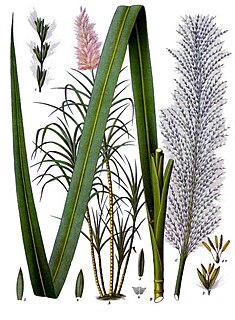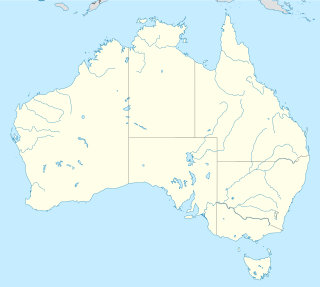
Jaggery is a traditional non-centrifugal cane sugar consumed in Asia. It is a concentrated product of cane juice and often date or palm sap without separation of the molasses and crystals, and can vary from golden brown to dark brown in colour, and is similar to the Latin American panela. It contains up to 50% sucrose, up to 20% invert sugars, and up to 20% moisture, with the remainder made up of other insoluble matter, such as wood ash, proteins, and bagasse fibres.

Piracicaba is a city located in the Brazilian state of São Paulo. The population is 404,142 (2019) in an area of 1378.07 km². It is at an elevation of 547 m above sea level.
The Catholic Media Council (CAMECO) is a consultancy specialising in media and communications in Africa, Asia, Latin America, Central and Eastern Europe, the Middle East and the Pacific. The overall aim of CAMECO's services, publications and resources is to contribute to the capacity building of partners and to empower community-oriented media and communication initiatives.

Cameco Corporation is the world's largest publicly traded uranium company, based in Saskatoon, Saskatchewan, Canada. In 2015, it was the world's second largest uranium producer, accounting for 18% of world production.
Gerald W. (Jerry) Grandey was previously the President and Chief Executive Officer of Cameco Corporation, one of the world's largest uranium producers. He joined Cameco in 1993 as Senior Vice President, and was appointed President in 2000 and CEO in 2003. In 2010, The Harvard Business Review recognized him as being one of the top 100 CEOs in the world because of the value created for shareholders during his tenure. Grandey retired from Cameco in 2011.

The McArthur River Uranium Mine, in northern Saskatchewan, Canada, is the world's largest high-grade uranium deposit.

The Key Lake mine is a former uranium mine in Saskatchewan, Canada. It is 570 kilometres (350 mi) north of Saskatoon by air on the southern rim of the uranium-rich Athabasca Basin. Key Lake was initially developed to open-pit mine two nearby uranium ore deposits: the Gaertner deposit and the Deilmann deposit. Mining of this ore ceased in the late 1990s; the Key Lake mill now processes uranium ore from the McArthur River mine and from existing stockpiles on site. High-grade ore from McArthur river is blended with lower grade local rock before being passed through the mill. The mill has a permitted annual production capacity of 25 million pounds of U3O8. In addition, ammonium sulfate fertilizer is produced as a byproduct from used reagents. The pits of the mined out local deposits are being used as mill tailings management facilities.

Rabbit Lake is the second largest uranium milling facility in the western world, and is the longest operating uranium production facility in Saskatchewan. The facility is located approximately 800 km north of Saskatoon, Saskatchewan, on the northeast edge of the uranium rich Athabasca Basin. The closest community is Wollaston Lake, about 40 kilometers by lake or air. Rabbit Lake was the first Canadian mine to offer a seven-days-in/seven-days-out commuter system of staffing. Access is provided by Highway 905. Production at Rabbit Lake was suspended in April 2016.

Royal University Hospital, often abbreviated RUH, is one of four hospitals in Saskatoon, Saskatchewan. It is located on the University of Saskatchewan campus. RUH is a teaching hospital and closely tied to the College of Medicine within the university. It was opened on May 14, 1955 by Saskatchewan premier Tommy C. Douglas.

Sugarcane juice is the liquid extracted from pressed sugarcane. It is consumed as a beverage in many places, especially where sugarcane is commercially grown, such as Southeast Asia, the Indian Subcontinent, North Africa, and Latin America. Sugarcane juice is obtained by crushing peeled sugar cane in a mill and is one of the main precursors of rum.

Sugarcane or sugar cane refer to several species and hybrids of tall perennial grass in the genus Saccharum, tribe Andropogoneae, that are used for sugar production. The plants are two to six metres tall with stout, jointed, fibrous stalks that are rich in sucrose, which accumulates in the stalk internodes. Sugarcanes belong to the grass family, Poaceae, an economically important flowering plant family that includes maize, wheat, rice, and sorghum, and many forage crops. It is native to the warm temperate to tropical regions of India, Southeast Asia and New Guinea.

Crow Butte is a uranium mining operation located 4 miles southeast of the city of Crawford in Dawes County, Nebraska, United States. Cameco Corporation holds a 100% interest in Crow Butte through its wholly owned subsidiary, Crow Butte Resources, Inc.

Smith Ranch and Highland are uranium mining operations located in Wyoming, U.S.A. They are separate permits, operated as a single operation, and have one central processing facility. The Smith Ranch-Highland operation is the largest uranium production facility in the United States.

Secret, Profane & Sugarcane is the 2009 studio album by Elvis Costello. It was recorded in Nashville with American songwriter and producer T Bone Burnett, and released on 9 June 2009 on the Hear Music label. The album features bluegrass, Americana and country music along with Costello's familiar garrulous lyrics.
UNICA, the Brazilian Sugarcane Industry Association, is a lobbying organization of producers of sugarcane and ethanol fuel. UNICA members are responsible for more than 50% of all ethanol produced in Brazil and 60% of overall sugar production.

The Yeelirrie uranium project is a uranium deposit located approximately 70 km southwest of Wiluna, in the Mid West region of Western Australia. The name Yeelirrie is taken from the local sheep station.
Nukem GmbH, together with its subsidiary Nukem Inc., markets nuclear fuel components and speciality products utilities worldwide. Since the 1970s, Nukem has transitioned from playing a modest role in uranium brokerage to becoming one of the world's largest intermediaries in the international nuclear fuel market.

Yeelirrie is an East Murchison pastoral lease or sheep station on State Crown land, located approximately 80 km south west of Wiluna, in the Mid West region of Western Australia. The nearest population centre to Yeelirrie homestead is Mount Keith Mine village, 45 kilometres (28 mi) to the east. The regional centre is Meekatharra, located 180 kilometres (112 mi) to the west.
The Economy of Saskatoon is quite diverse. The city hosts the head-offices for several companies. Various grains, livestock, oil and gas, potash, uranium, wood and their spin off industries fuel the economy. The world's largest publicly traded uranium company, Cameco, and the world's largest potash producer, Nutrien, have corporate headquarters in Saskatoon. Nearly two-thirds of the world's recoverable potash reserves are located in the Saskatoon region.











